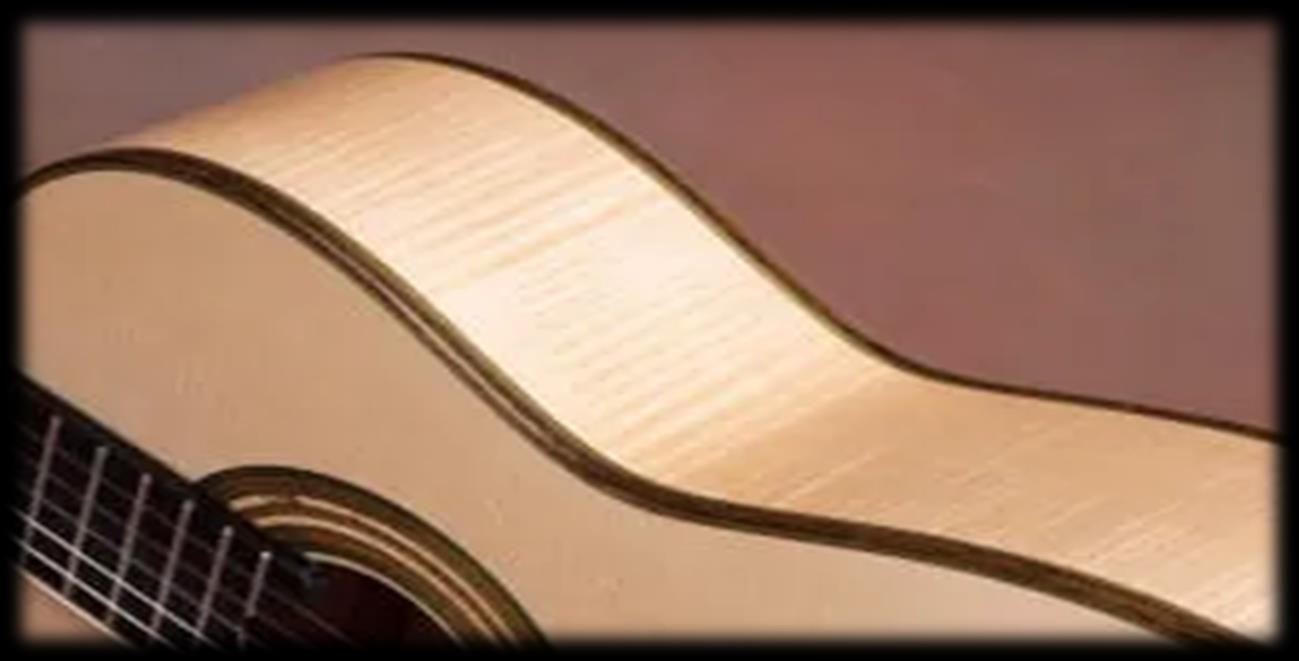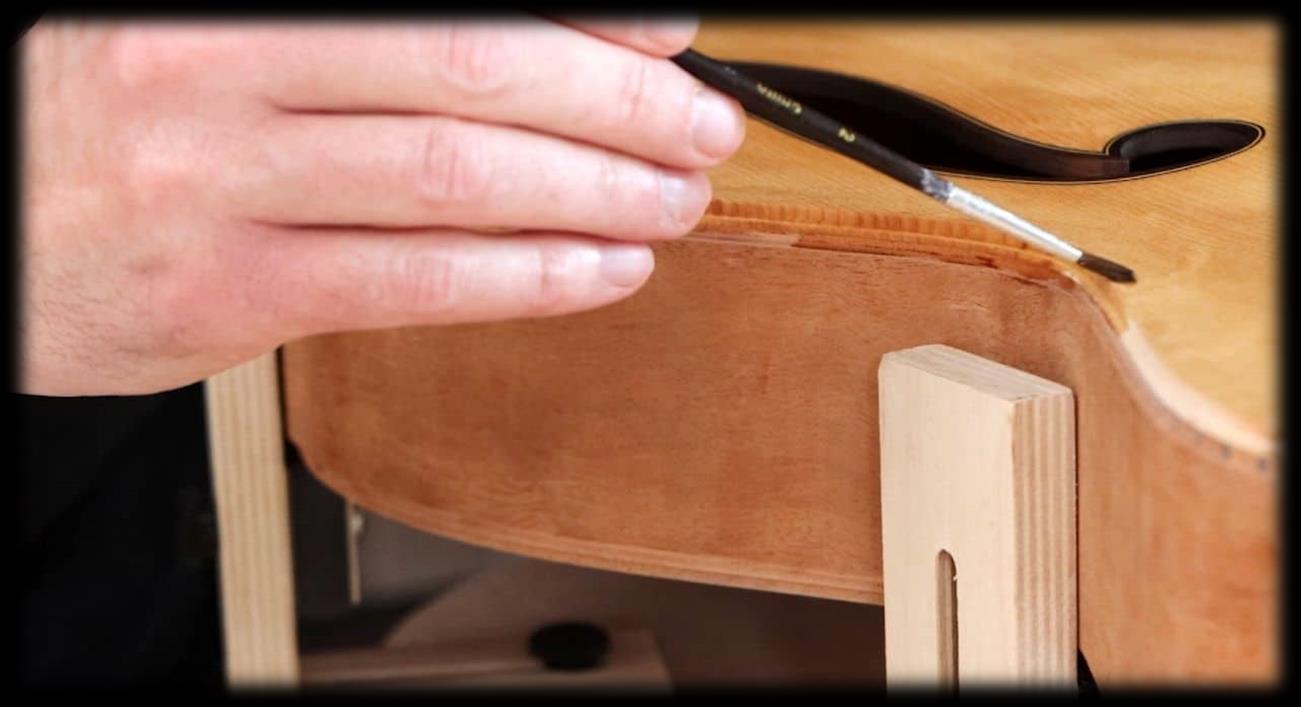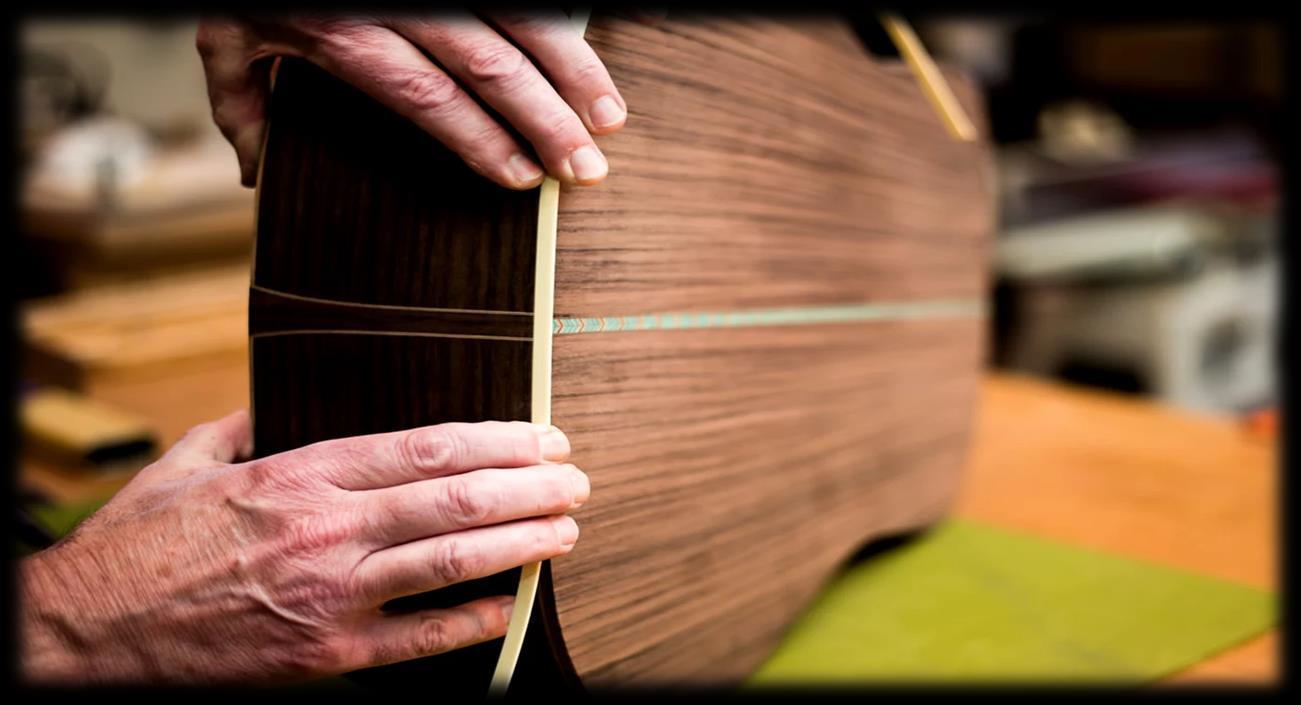

The Art of Guitar Binding: Crafting the Perfect Finish for Your Instrument
Guitar binding is an essential element in the construction and finishing of a guitar. It adds not only to the aesthetic appeal but also to the durability and overall craftsmanship of the instrument. A well-executed binding job can take a guitar from good to great, making it stand out in both tone and visual appeal. In this article, we’ll explore the art of guitar binding, the different types of wood used, and why it plays such a crucial role in crafting the perfect finish for your guitar.

What Is Guitar Binding?
It refers to the decorative and protective material that’s applied around the edge of the body of the instrument. It serves several functions, including enhancing the visual appeal, protecting the guitar’s wood from damage, and sometimes adding structural integrity to the guitar. The binding material is often chosen for its aesthetic qualities, but guitar binding also must be durable enough to withstand the wear and tear that comes with frequent use.
Typically, it is applied to the top, back, and sometimes the neck of the guitar. It can be made from a variety of materials, each offering unique characteristics in terms of both appearance and functionality. Let's take a deeper look at some of the most popular materials used in guitar making.

Types of Guitar Binding Materials
Maple Binding
These maple guitar binding is the most commonly used materials due to its strength and classic appearance. This type of binding offers a light, clean aesthetic that pairs well with a variety of woods used for the guitar body. It is typically used in electric guitars and acoustic guitars, giving the instrument a sleek and professional look

The natural grain of maple is highly visible when it's cut and finished properly, which can add subtle but striking visual texture to the guitar. Whether it’s a solid color or a more figured design, it creates a sharp, elegant border that accentuates the curves and contours of the instrument.
Koa Binding
Koa binding is often used in high-end guitars, particularly those from Hawaii or other tropical regions. The rich, golden tones of koa wood lend a warm, vintage feel to any guitar. Premium figured koa binding takes this a step further, adding a dramatic flair with its wavy, highly figured grain pattern that creates a unique visual appeal.
While it is often used in acoustic guitars, it can also be used in electric guitars to give them a more exotic and luxurious look. The subtle hues and stunning grain patterns of koa make it a favorite among guitar builders and players who want a distinctive look that sets their instrument apart

Ebony Guitar Binding
The ebony guitar binding is a popular choice for its rich, dark color and exceptional durability. Known for its smooth texture and fine grain, ebony adds a high-end, sleek finish to the guitar. It is often paired with lighter woods to create a striking contrast that enhances the visual appeal of the instrument

In addition to its aesthetic qualities, it is highly resistant to wear and tear, which makes it a great choice for guitars that are played frequently. The dark, luxurious appearance of ebony binding gives the guitar a sophisticated and professional look that players of all levels appreciate.
Rosewood Guitar Binding
It is another popular choice, offering a slightly more subtle and warm look than maple or ebony. Its rich brown hues with darker streaks provide a beautiful contrast to lighter woods. Rosewood guitar binding is often used in high-end acoustic guitars and can create a vintage-inspired look, perfect for players who appreciate the aesthetic appeal of traditional designs.
Not only does rosewood guitar binding add to the visual appeal of the instrument, but it also offers excellent protection for the guitar’s edges. It’s a highly durable material that can withstand years of use, making it ideal for instruments that are intended to last a lifetime
Why Guitar Binding Matters Aesthetic Appeal
It is more than just a practical feature; it adds a significant aesthetic element to the instrument. Whether it’s maple creating a sleek, minimalist look or koa adding an exotic touch, the right material can completely transform the appearance of a guitar. The choice of binding often reflects the builder’s craftsmanship and the player's personality.
Durability and Protection
In addition to its beauty, guitar binding serves a critical functional purpose. The binding acts as a protective barrier, shielding the edges of the guitar body from potential damage such as dents, dings, and scratches. This is particularly important for guitars that are frequently used in live performances or recording sessions
The durability of materials like ebony and rosewood guitar binding ensures that the instrument can withstand years of playing while maintaining its structural integrity.
Enhancing Sound Quality
While the primary function of binding is to protect and beautify the guitar, it can also play a role in enhancing the instrument’s sound quality. The material affects the resonance of the guitar, especially when used with tonewoods like koa or maple. Certain materials can help accentuate the tonal characteristics of the guitar, contributing to a richer, more vibrant sound


How to Choose the Right Guitar Binding for Your Instrument
When selecting the best material, it’s important to consider both the visual and functional aspects. Here are some things to keep in mind:
Personal Preference: The choice of material should align with your personal aesthetic preferences. Do you want a light, sleek look (maple), or are you looking for something more exotic (koa)?
Durability: If your guitar is going to be played heavily, opt for durable materials like ebony or rosewood.
Tone: Consider how it will affect the overall tone of the instrument. Lighter woods like maple might emphasize clarity, while heavier woods like koa or rosewood may enhance warmth and richness
Commonly Asked Questions
What is the purpose of guitar binding?
It adds decorative appeal, protects the edges from damage, and can enhance tonal qualities depending on the material.

What materials are commonly used for guitar binding?
Common materials include maple binding, koa binding, and rosewood binding. Each offers unique visual and functional benefits.
Can guitar binding affect the sound of the instrument?
Yes, the material can impact resonance. Lighter woods like maple brighten the tone, while denser woods like koa and rosewood add warmth and depth.
How do I choose the right binding for my guitar?
The best material for your guitar depends on your personal preferences, the durability required for frequent use, and the tonal characteristics you’re looking to achieve.
Can guitar binding be replaced or repaired?
Yes, but it requires professional expertise to maintain a flawless finish. Always consult an expert for replacements or repairs.


Conclusion
It is crucial for enhancing the appearance, durability, and sound of your instrument. Materials like maple, koa, and ebony binding each offer unique aesthetics, from sleek maple to exotic koa and luxurious ebony. Beyond visual appeal, it also improves tonal qualities and ensures longlasting durability, protecting the guitar from wear and tear while adding both style and functionality For high-quality materials to create or upgrade your guitar, Pacific Rim Tonewoods is a trusted supplier offering premium tonewoods and binding options. Their wide selection helps you find the perfect materials to match your style, elevating your guitar's appearance, performance, and durability





